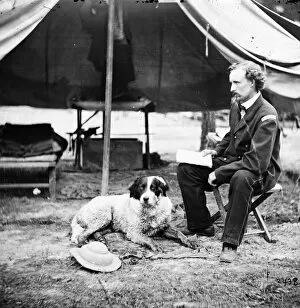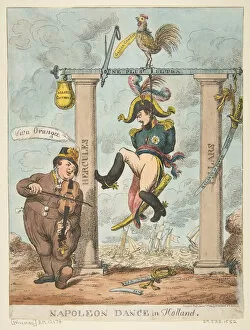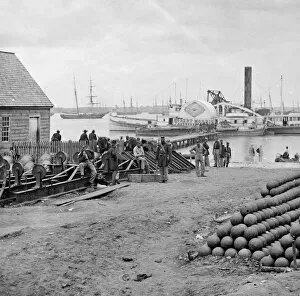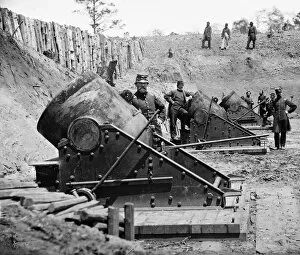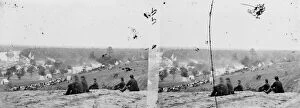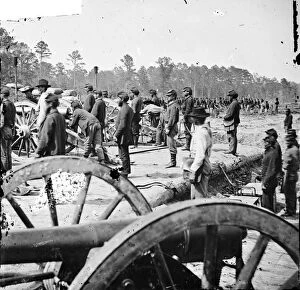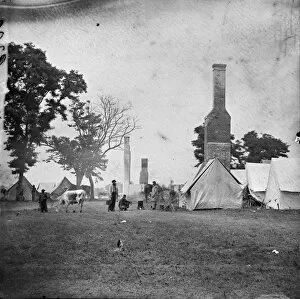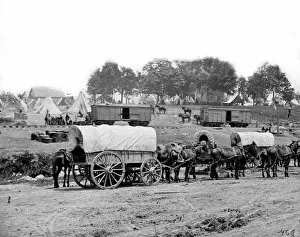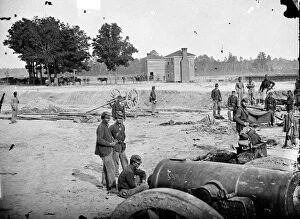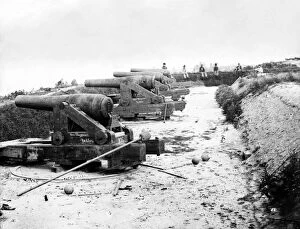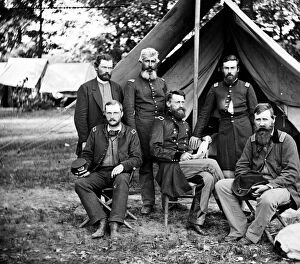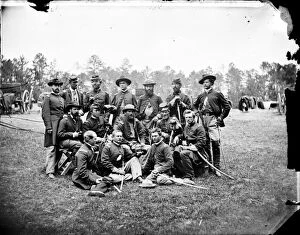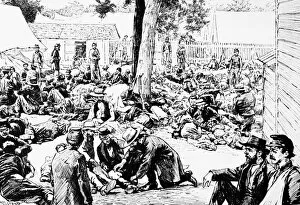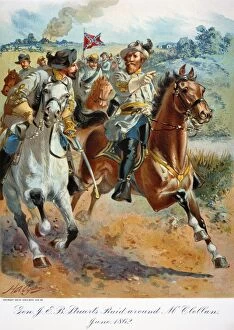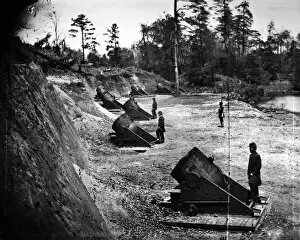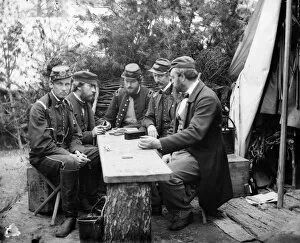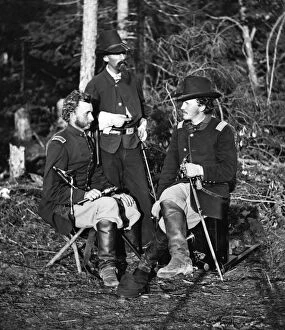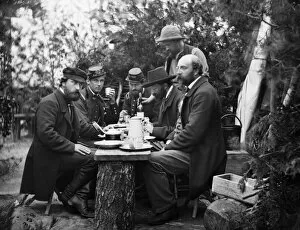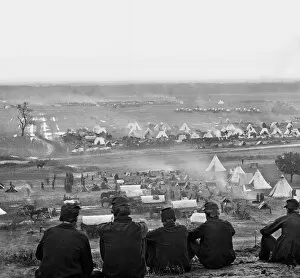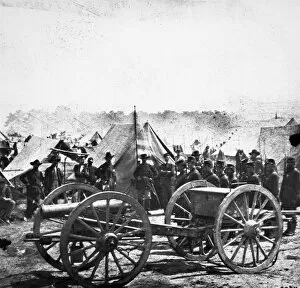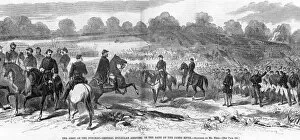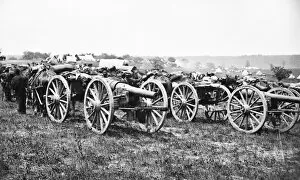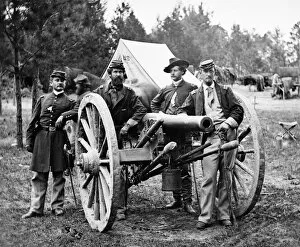Peninsular Campaign Collection
The Peninsular Campaign of the Civil War was a pivotal moment in American history, marked by both triumph and tragedy. Lieutenant George A
For sale as Licensed Images
Choose your image, Select your licence and Download the media
The Peninsular Campaign of the Civil War was a pivotal moment in American history, marked by both triumph and tragedy. Lieutenant George A. Custer, known for his later exploits at Little Bighorn, found solace amidst the chaos with his loyal canine companion by his side at camp in Virginia in 1862. As we delve into this campaign's narrative, it is impossible to ignore the echoes of Napoleon's dance in Holland on January 1st, 1814. Just as he maneuvered through foreign lands with strategic precision, so too did Union forces navigate the treacherous terrain of the Peninsula. Union army encampments along the Pamunkey River at Cumberland Landing served as a temporary respite from battle-weary soldiers' hardships. The battery stationed nearby exemplified their determination to defend against Confederate advances during this critical phase. Amidst these scenes of war-torn landscapes and ruined plantations like White House lay testament to the devastating toll exacted upon both sides. Yet within this destruction emerged moments of resilience and strength that defined this campaign. Union artillery parked stoically during the Peninsular Campaign in Yorktown showcased their readiness for combat while General George McClellan's headquarters at Savage Station became a hub of strategy and decision-making amid uncertainty. On battlefields such as Seven Pines, Virginia, field howitzers roared alongside brave soldiers who fought valiantly for their cause. Confederate Fort Magruder stood fortified by Rodman smooth-bore siege guns – formidable weapons that tested Union resolve. General George Stoneman led his troops with unwavering determination near Fair Oaks, Virginia – an embodiment of leadership amidst adversity. Meanwhile, brigade officers commanded horse artillery units that brought firepower wherever needed on these blood-soaked grounds. In contrast to these displays of military might were Federal Battery Number 4's massive seacoast mortars - imposing structures capable of unleashing devastation upon enemy lines.

